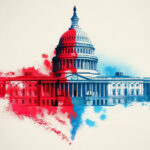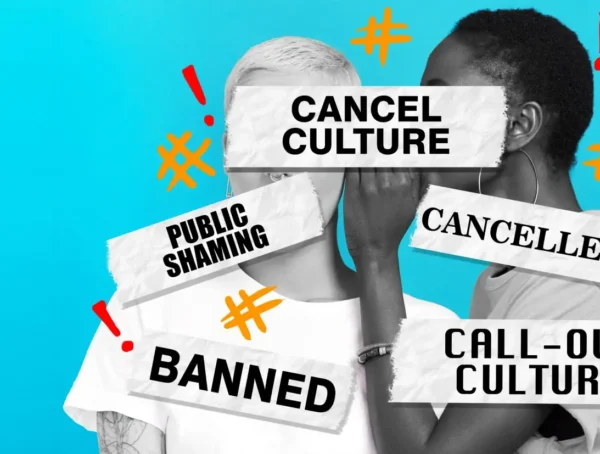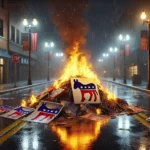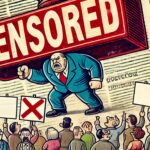TL;DR Summary
The 2024 COVID-19 Judiciary Hearings exposed systemic failures across government, science, and media, highlighting a collapse in transparency, accountability, and independence. Key revelations included Dr. Fauci’s use of private emails to bypass FOIA laws, U.S. funding of gain-of-function research at the Wuhan Institute despite denials, and the suppression of the lab-leak hypothesis by officials and journalists to protect reputations and maintain diplomatic ties with China. Media collusion amplified government narratives, discredited dissenting scientists, and sidelined critical debate, while oversimplified vaccine messaging downplayed risks like waning immunity and myocarditis to enforce compliance.
These failures enabled corporate elites, including pharmaceutical companies, to profit from pandemic policies, with financial conflicts of interest—such as NIH royalties from Moderna patents—fuelling distrust. The alignment of government and corporate interests eroded public confidence, driving polarization and misinformation amid the absence of honest communication.
This “meta-crisis” revealed how institutional self-preservation destabilizes society, shaking the pillars of trust and progress. Rebuilding confidence requires enforcing transparency, addressing financial conflicts, and fostering open inquiry to prevent future crises from further unraveling the social fabric.
Let’s start with a simple yet profound thought:
Welcome to a complex and unsettling chapter in our collective narrative. The COVID-19 Judiciary Hearings have peeled back the curtain on a series of coordinated actions between governmental bodies, the current administration, and technological giants to control the discourse surrounding the pandemic. This isn’t merely a political scandal; it’s a symptomatic revelation of deeper systemic issues in how information and dissent are managed in our society.
The COVID-19 Judiciary Hearings of 2024 revealed a disturbing reality: The State Department, Defense, Justice, Health and Human Services, Homeland Security, Treasury, and the National Science Foundation worked with the Biden administration, Dr. Anthony Fauci, and Big Tech to silence COVID-19 narratives that challenged their interests. Social media platforms suppressed discussions about the lab-leak theory to protect reputations, while voices questioning vaccine mandates or safety were flagged as “misinformation,” driven by collusion with Big Pharma. These coordinated efforts to control the narrative have raised serious ethical concerns about government transparency and accountability. Witnesses in the hearings presented damning videos on COVID coverups that showcased how information was manipulated or withheld from the public. As the investigation unfolds, it becomes increasingly clear that the implications of these actions extend beyond public health, threatening the very foundations of democratic discourse. The implications of these revelations are profound, as they suggest a systematic erosion of trust in not only public health institutions but also in the democratic processes meant to ensure accountability. During the Senate Homeland Security Committee inquiry, lawmakers emphasized the urgent need for greater oversight and transparency to prevent similar occurrences in the future. As more evidence surfaces, the potential for widespread reform becomes a crucial topic of discussion in both political and public spheres, underscoring the necessity of safeguarding democratic principles against potential governmental overreach. The fallout from these hearings has ignited a national conversation about the balance between public safety and free speech, as citizens demand accountability from their leaders. As lawmakers analyze the implications of the damning videos on COVID origins, calls for comprehensive reforms to ensure transparency and protect civil liberties are growing louder. This unprecedented scrutiny may serve as a turning point, prompting a reevaluation of how information is managed during public health crises and fostering a renewed commitment to upholding democratic values in the face of adversity.
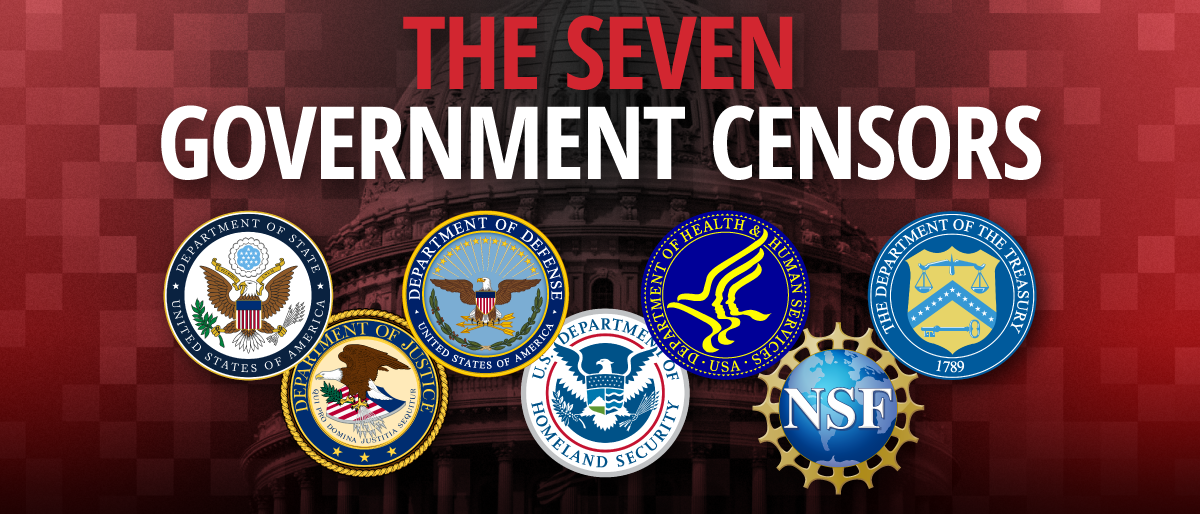
What’s more alarming is how effective these efforts remain. Today, nearly half of Americans either know nothing about these revelations or dismiss them as baseless conspiracy theories; a true testament to the continued influence of media outlets that have ignored or downplayed these findings. The reason you may not know the details of what follows is simple: for four years, a concerted effort has been made to suppress this critical story, one every American deserves to understand.
The 7 Ways COVID-19 Misinformation Was Manufactured
Themes of Collusion
The Fauci COVID Hearings Revealed Systemic Issues:
- Narrative Control: Suppressing competing hypotheses like the lab-leak theory.
- Financial Conflicts of Interest: Profiting from policies promoting vaccines and pharmaceutical solutions.
- Censorship: Silencing dissent on social media and in public discourse.
- Transparency Evasion: Using private emails and bureaucratic loopholes to avoid accountability.
SOURCES:
Government Agencies
1. NIH (National Institutes of Health)
- Dr. Anthony Fauci, as the head of NIAID (National Institute of Allergy and Infectious Diseases), which is a part of the NIH, was central to discussions about funding gain-of-function research.
- Involved in steering public narratives about the origins of COVID-19, particularly favoring the zoonotic origin theory over the lab-leak hypothesis.
SOURCES:
2. CDC (Centers for Disease Control and Prevention)
- Coordinated with Fauci and other officials to promote public health messaging, sometimes oversimplifying or suppressing data about vaccine efficacy, waning immunity, and side effects.
- Suppressed dissenting voices and alternative approaches to public health policies, such as targeted protection over universal lockdowns.
SOURCES:
3. FDA (Food and Drug Administration)
- Played a role in supporting the expedited rollout of vaccines under Emergency Use Authorization while downplaying concerns about long-term safety and side effects.
- Worked to reinforce messaging that aligned with federal narratives.
SOURCES:
4. DHS (Department of Homeland Security)
- Through its Cybersecurity and Infrastructure Security Agency (CISA), flagged COVID-related “misinformation” on social media platforms, aligning with Fauci-led public health directives.
SOURCES:
5. White House
- The Biden administration was heavily involved in coordinating with Fauci and other officials to manage public narratives.
- Pressured Big Tech to censor content contradicting government-endorsed positions on COVID-19 origins, vaccine efficacy, and pandemic policies.
SOURCES:
6. NIAID (National Institute of Allergy and Infectious Diseases)
- Under Fauci’s leadership, the NIAID funded EcoHealth Alliance, which redirected funds to the Wuhan Institute of Virology for research that may have included gain-of-function experiments.
- Played a central role in managing communications about the origins of COVID-19.
SOURCES:
7. EcoHealth Alliance
- This NGO was a key intermediary in funneling NIH funding to the Wuhan Institute of Virology.
- Worked closely with Fauci and NIAID, raising questions about accountability and transparency in its use of taxpayer funds.
SOURCES:
- What Does NIH Letter Say About Gain-of-Function Research?
- US Suspends Funding to EcoHealth Alliance Over Wuhan Research Oversight
- Elon Musk Demands Charges Against Anthony Fauci After NIH Admits Funding Gain-of-Function Research
- What Was Anthony Fauci’s Top Aide Hiding?
- Ralph Baric, Whose Virology Techniques Were Used in Wuhan, Testified That Lab Leak Was Possible
8. WHO (World Health Organization)
- Collaborated with U.S. agencies to promote the zoonotic origin theory and discredit the lab-leak hypothesis.
- Influenced by Fauci and other officials in shaping international pandemic response narratives.
SOURCES:
9. Big Pharma
- Companies like Moderna and Pfizer were directly implicated through financial ties to government health officials.
- NIH scientists, including Fauci, received royalties from patents tied to mRNA vaccine technology, raising concerns about conflicts of interest in vaccine recommendations.
SOURCES:
10. Big Tech (Social Media Platforms)
- Platforms like Twitter, Facebook, and YouTube were pressured to remove or suppress content questioning vaccines, lockdowns, or alternative treatments.
- Acted on directives from public health agencies to label dissenting views as “misinformation.”
SOURCES:
Supporting Agencies and Collaborators
1. State Department
- Involved in shaping international messaging about COVID-19, particularly in support of the zoonotic origin theory.
- Promoted initiatives to counter “misinformation,” aligning with Fauci-led narratives.
SOURCES:
2. Congressional Members
- While not directly complicit, some members of Congress supported Fauci’s positions, shielding him from early scrutiny while downplaying alternative narratives.
SOURCES:
3. Academic and Research Institutions
- Collaborated with Fauci and the NIH to publish studies and letters favoring the zoonotic origin theory, such as the infamous The Lancet letter organized by EcoHealth Alliance’s Peter Daszak.
SOURCES:
4. Mainstream Media
- The media acted as an amplifier for government-approved narratives, often discrediting alternative hypotheses and dissenting scientists.
- Played a central role in normalizing the vilification of figures like Dr. Bhattacharya and Dr. Malone.
SOURCES:
1) Media’s Role in Narrative Control: A Betrayal of Public Trust
During the pandemic, something unexpected happened. The media, which we rely on to question institutions and the government, ended up partnering with them to suppress dissent and shape narratives. Internal memos and FOIA-released emails showed that journalists and public health officials coordinated to silence scientists who questioned things like lockdowns, masks, and vaccine mandates.
For example, Dr. Jay Bhattacharya and Dr. Martin Kulldorff wrote the Great Barrington Declaration advocating for focused protection but faced targeted attacks undermining their expertise. Major news outlets amplified these attacks, simplifying complex public health debates. Social media censorship further stifled dissent, limiting open discussion and alternative views.
The hearing even revealed emails that showed deliberate plans to label dissenting scientists as “fringe” or “anti-science,” pushing aside real concerns about public health policies. Remember how the lab-leak theory was dismissed as a conspiracy? Until it couldn’t be ignored anymore. This suppression helped institutional interests through a coordinated effort between the government and mainstream media.
CENSORED: The Doctors Who Challenged the COVID Narrative
-
- Dr. Jay Bhattacharya: A Stanford University professor and co-author of the Great Barrington Declaration, which advocated for focused protection over widespread lockdowns. Bhattacharya faced significant backlash and censorship, yet his critique of prolonged lockdowns has been validated by studies showing the collateral damage caused by such measures. Hoover Institution
- Dr. Robert Malone: A virologist and early pioneer of mRNA vaccine technology, Malone raised concerns about vaccine side effects, including myocarditis in young males. These risks were later acknowledged by health officials, confirming his warnings. FactCheck.org
- Dr. Peter McCullough: A cardiologist and critic of blanket vaccine mandates, McCullough highlighted the risks of myocarditis and advocated for individualized vaccination strategies. His concerns about vaccine side effects and the need for tailored approaches have since been supported by public health discourse. American College of Cardiology
- Dr. Vinay Prasad: A hematologist-oncologist who questioned mask mandates, school closures, and universal booster policies. His critiques were later supported by studies showing limited efficacy of mask mandates and the negative effects of prolonged school closures. Reason
Reformative Steps
-
ACTIONS THAT HAVE BEEN PUT IN PLACE:
- CDC Reforms: The CDC has revised its public messaging guidelines to prioritize clear explanations of vaccine efficacy, risks, and limitations.
- Community Outreach: Increased efforts to involve community leaders in public health campaigns to address vaccine hesitancy.
-
REMEDIES STILL NEEDED TO BE PUT IN PLACE:
- Ensure communication of nuanced, data-driven information to the public.
- Acknowledge uncertainties and engage the public transparently.
1. REVELATIONS OF COLLUSION WITH PUBLIC HEALTH OFFICIALS
-
Coordinated Efforts to Shape Public Narratives:
- Hearings uncovered internal memos and emails revealing collaboration between journalists and public health officials to suppress dissenting views.
-
Example:
- Journalists worked with officials like Dr. Fauci and NIH representatives to discredit scientists questioning lockdowns or vaccine mandates, labeling them as “fringe” or “anti-science,” regardless of their credentials.
-
Silencing of Dissenting Voices:
- Emails revealed efforts to blacklist scientists and physicians who opposed prevailing public health policies.
-
Example:
- Dr. Jay Bhattacharya and Dr. Martin Kulldorff, co-authors of the Great Barrington Declaration advocating for focused protection rather than lockdowns, were targeted with campaigns to delegitimize their perspectives. (Source: FOIA-Released Communications)
-
Media’s Role in Amplifying Narratives:
- Publications and networks often repeated talking points provided by health officials, dismissing alternative views as misinformation without engaging in substantive critique.
2. FAILURE OF JOURNALISM’S INDEPENDENCE
-
Suppression of Alternative Scientific Views:
- Credentialed scientists raising legitimate questions about policies like mask mandates, school closures, or vaccine efficacy were marginalized or excluded from mainstream coverage.
-
Example:
- Dr. Scott Atlas, who advised the Trump administration, was repeatedly vilified for questioning prolonged lockdowns, despite presenting data-supported arguments.
2) Gain-of-Function Research: The Limits of Hubris
The COVID-19 Judiciary Hearings exposed a stark truth: U.S. funding supported gain-of-function research despite years of denial. In 2024, Dr. Anthony Fauci admitted under oath that NIAID-funded projects met the criteria for such research, enhancing pathogen transmissibility or lethality. Evidence showed grants, funneled through EcoHealth Alliance, supported work at the Wuhan Institute of Virology on modifying bat coronaviruses.
Advocates claim gain-of-function research prepares us for pandemics, but the COVID-19 outbreak highlights its dangers. Attempting to preempt problems can create larger ones, as seen with the 1977 H1N1 lab-linked outbreak. These hearings reveal the risks of such research, where ambition to understand pathogens veers into creating existential threats.
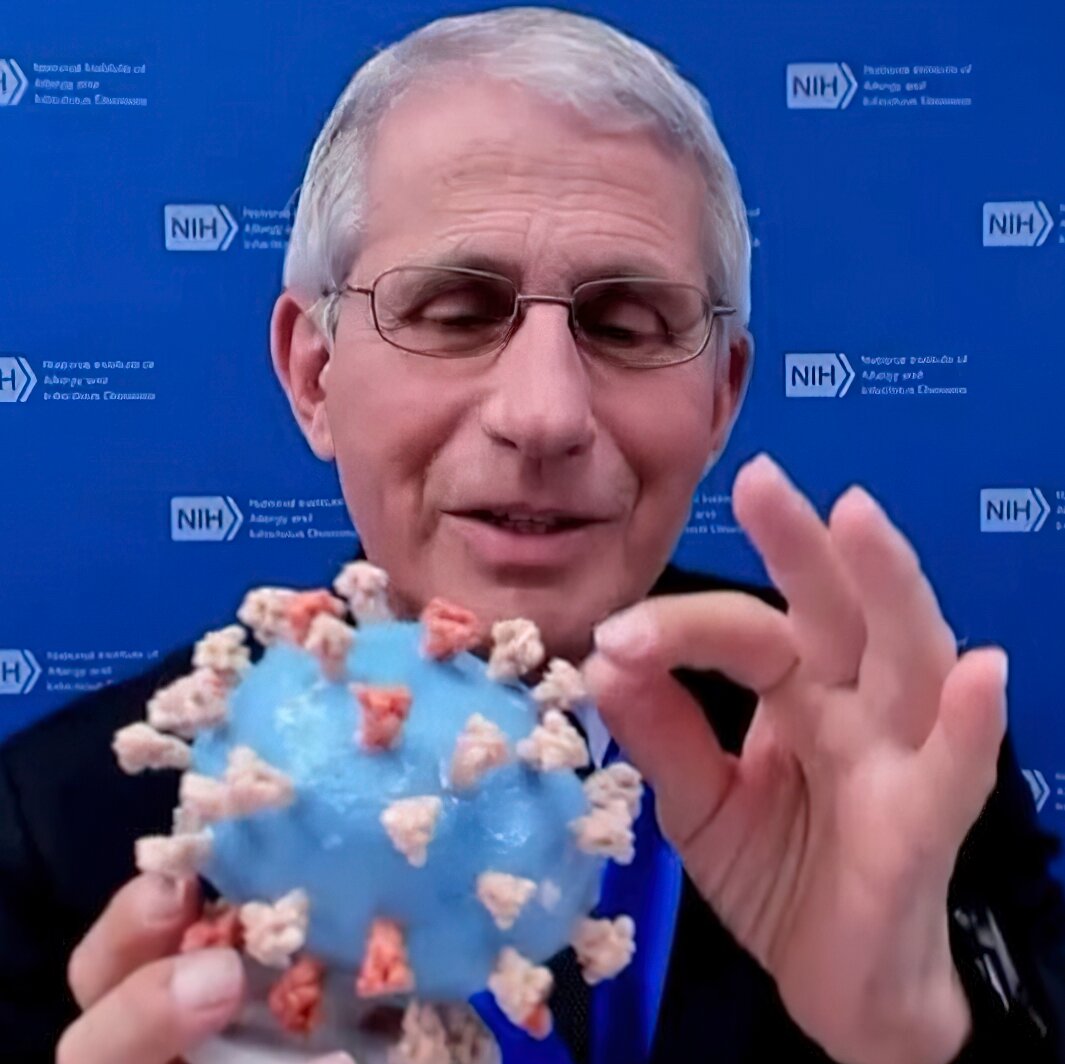
The hearings also exposed a fragmented oversight system with research outsourced to lower biosafety labs. This failure of safeguards shows how unchecked scientific progress can border on recklessness.
Reformative Steps
-
ACTIONS THAT HAVE BEEN PUT IN PLACE:
- Congressional Hearings: The Judiciary Hearings of 2024 shed light on suppressed inquiries, providing a platform for accountability.
- EcoHealth Alliance Audits: Federal funding to EcoHealth Alliance is now under scrutiny, with grants suspended until compliance with new transparency measures is assured.
-
REMEDIES STILL NEEDED TO BE PUT IN PLACE:
- Establish independent oversight bodies for public health decisions and audit sensitive research projects like gain-of-function.
- Impose strict consequences for suppressing scientific dissent or manipulating narratives.
1. THE ADMISSION OF GAIN-OF-FUNCTION FUNDING
-
Fauci’s Testimony Under Oath:
- Dr. Anthony Fauci, during the hearings, acknowledged that certain projects funded by the National Institute of Allergy and Infectious Diseases (NIAID) met the definition of gain-of-function research.
-
Examples:
- One such project involved research at the Wuhan Institute of Virology (WIV), supported through sub-grants by EcoHealth Alliance.
- Researchers worked on modifying bat coronaviruses to study their potential to infect human cells, enhancing their transmissibility in laboratory conditions.
(Source: Congressional Hearing Records, 2024)
-
The Prior Denials:
- For years, U.S. officials denied involvement in funding gain-of-function research.
- Emails revealed in FOIA requests showed Fauci and others debating how to frame this work to avoid public backlash, with discussions focusing on definitions and semantics.
2. THE COVID-19 CONNECTION: LAB-LEAK HYPOTHESIS
-
Hypothesis of a Lab-Origin Pandemic:
- Early in the pandemic, the lab-leak hypothesis was dismissed by many as a conspiracy theory.
- Evidence unearthed during the hearings, however, showed that gain-of-function experiments were conducted at WIV, focusing on bat coronaviruses closely related to SARS-CoV-2.
-
Emails Highlighting Narrative Management:
- Emails revealed Fauci and other officials discussing ways to steer public discourse toward a zoonotic origin, despite the lack of conclusive evidence.
-
Key Example:
- An influential paper in Nature Medicine dismissing the lab-leak hypothesis was later found to have been discussed and influenced by Fauci before publication.
(Source: Vanity Fair Investigation)
- An influential paper in Nature Medicine dismissing the lab-leak hypothesis was later found to have been discussed and influenced by Fauci before publication.
3. REGULATORY FAILURES AND OVERSIGHT
-
Lack of Comprehensive Oversight:
- Documents revealed that oversight for international gain-of-function projects was inconsistent, with U.S. funding agencies often relying on the host countries’ own safety standards.
-
Example:
- Wuhan Institute of Virology operated at biosafety level-2 (BSL-2) for certain experiments—a lower standard than the recommended BSL-4 for high-risk pathogens.
-
Funding Loopholes:
- Despite the U.S. moratorium, funding continued indirectly through grants to organizations like EcoHealth Alliance, which subcontracted the work abroad.
3) The Lab Leak Hypothesis: A Case Study in Suppression
The suppression of the lab-leak hypothesis during the COVID-19 pandemic hearings is a compelling case study in the fragility of institutional integrity when narrative management supersedes scientific inquiry. The notion that SARS-CoV-2 might have originated in a laboratory wasn’t dismissed on scientific grounds; it was because it was inconvenient. By orchestrating this suppression, these government bodies traded intellectual honesty for short-term stability. Through revealed communications, we see a deliberate orchestration by Dr. Anthony Fauci, other officials, and prominent scientists to frame the zoonotic origin as the dominant narrative days after acknowledging that it looks lab created.
And herein lies the paradox. The justification for suppressing competing hypotheses under the guise that it would “preserve public trust” and “confuse the American people” ultimately undermined the very foundation of scientific credibility. These currupt government officials compromised the principle of intellectual honesty that science is built upon. Science, when shackled by the demands of institutional preservation, betrays its purpose as a means of uncovering reality. It devolves into a mere performance, serving ideological or bureaucratic interests rather than truth.
Through revealed communications, we see a deliberate orchestration by Dr. Anthony Fauci, other officials, and prominent scientists to frame the zoonotic origin as the dominant narrative days after acknowledging that it looks lab created.
Moving forward, this incident must serve as a wake-up call about the dangers of allowing government influence to overshadow scientific principles. The remedy lies in adopting radical transparency and a renewed dedication to intellectual rigor. We must remain vigilant about how such influences intertwine with corporate and pharmaceutical interests, recognizing the broader implications for public trust and the pursuit of unbiased knowledge.
Reformative Steps
-
ACTIONS THAT HAVE BEEN PUT IN PLACE:
- Royalties Oversight: Following revelations about NIH royalty payments from Moderna, the agency has committed to publishing financial disclosures for all research-related royalties.
- Conflict of Interest Legislation: A bill introduced in Congress seeks to ban top officials from owning stock in industries they regulate (e.g., No Stock for Public Servants Act).
-
REMEDIES STILL NEEDED TO BE PUT IN PLACE:
- Prohibit public health officials from holding financial stakes in regulated industries.
- Require real-time public disclosure of financial ties to private companies.
1. THE INITIAL DISMISSAL OF THE LAB-LEAK HYPOTHESIS
-
Early Narrative Framing:
- In the early months of the pandemic, the idea that SARS-CoV-2 may have originated from a laboratory accident was dismissed as a “conspiracy theory.”
- This framing dominated major media outlets and public discourse despite the lack of conclusive evidence for a zoonotic origin.
-
Example of Media Narrative:
- Articles in prominent publications like The New York Times and Nature initially emphasized natural origins, often portraying the lab-leak theory as fringe or politically motivated.
(Source: Nature Article, March 2020)
- Articles in prominent publications like The New York Times and Nature initially emphasized natural origins, often portraying the lab-leak theory as fringe or politically motivated.
2. COORDINATED EFFORTS TO SUPPRESS THE LAB-LEAK HYPOTHESIS
-
Emails Revealed Through FOIA:
- Emails obtained through FOIA revealed coordinated discussions between Fauci, NIH officials, and prominent scientists to steer public discourse.
-
Key Example:
- A February 2020 email from Dr. Kristian Andersen to Fauci raised concerns about “unusual features” of the virus that might indicate engineering.
- However, subsequent emails showed Andersen and others publicly dismissing the lab-leak theory after consultations with Fauci and other officials.
-
Steering Public Messaging:
- Fauci and Dr. Francis Collins (NIH) discussed the need to “put down” the lab-leak hypothesis, fearing it could damage trust in science.
-
Example: A March 2020 letter in The Lancet signed by prominent scientists dismissed the lab-leak theory, later revealed to have been organized by Peter Daszak of EcoHealth Alliance—an organization with financial ties to the Wuhan Institute of Virology.
(Source: The Lancet Correspondence)
3. EVIDENCE OF A LAB-ORIGIN HYPOTHESIS
-
Scientific Questions Raised:
-
Genetic Features of SARS-CoV-2:
- Many researchers highlighted the furin cleavage site, a unique genetic sequence in SARS-CoV-2, as unusual and possibly indicative of laboratory manipulation.
-
Lack of a Definitive Zoonotic Origin:
- Despite extensive investigations, no intermediary species linking bats to humans has been found, unlike with previous coronaviruses such as SARS and MERS.
(Source: World Health Organization Report)
- Despite extensive investigations, no intermediary species linking bats to humans has been found, unlike with previous coronaviruses such as SARS and MERS.
-
Genetic Features of SARS-CoV-2:
-
Internal Discrepancies:
- While public messaging emphasized zoonotic origins, private emails unveiled in Judiciary Hearings revealed significant uncertainty among top officials.
4) Vaccine Messaging: The Collapse of Public Trust
The media, complicit in this charade, became a mouthpiece for state-endorsed narratives. Figures like MSNBC’s Rachel Maddow assured the public the vaccine stopped transmission outright: “The virus stops with every vaccinated person,” she declared. These proclamations were parroted by officials, including CDC Director Dr. Rochelle Walensky, only for the truth to later emerge—vaccinated individuals could still spread the virus. This blatant contradiction unraveled public confidence, and dissenters who dared to question the narrative were smeared as conspiracy theorists, a chilling suppression of free speech in a supposed democracy.
Hundreds of scientists warned against this “truth by consensus,” yet their voices were drowned out by a machinery bent on preserving its power – and half of America bought it.
The pandemic didn’t just reveal a crisis of public health; it unmasked the corruption at the intersection of government, media, and corporate interests—a betrayal of trust on an unprecedented scale. Dr. Anthony Fauci, under oath, admitted that vaccine messaging was crafted for compliance, not truth. The mantra of “safe and effective” deliberately concealed complexities—breakthrough infections, waning immunity, and rare but serious risks like myocarditis in young men. Officials claimed the public couldn’t handle the truth, fearing vaccine hesitancy. But their manipulation wasn’t merely paternalistic; it served financial and political agendas, shielding pharmaceutical companies and distancing institutions from the lab-leak theory.
WATCH MSNBC AIR RACHEL MADDOW ASSURE THE PUBLIC THE VACCINE STOPS TRANSMISSION
Hundreds of scientists warned against this “truth by consensus,” yet their voices were drowned out by a machinery bent on preserving its power – and half of America bought it. The vaccine narrative became a tool of corporate profit and governmental control, exposing a collusion that transcended partisan lines. Rebuilding trust demands a return to rigorous, principled science and a fearless confrontation with corruption, regardless of political allegiance. This was not just a failure of public health—it was a moral failure of the government, the media, and the institutions we once relied upon for truth.
Reformative Steps
-
ACTIONS THAT HAVE BEEN PUT IN PLACE:
- Research Oversight: The U.S. government reinstated funding moratoriums on certain types of gain-of-function research until stricter oversight frameworks are developed.
- International Collaboration: Efforts like the World Health Organization’s renewed pandemic treaty emphasize depoliticized global investigations.
-
REMEDIES STILL NEEDED TO BE PUT IN PLACE:
- Foster open inquiry and debate in scientific communities.
- Remove political influence from research and ensure safety standards for hazardous research.
1. SIMPLIFYING THE MESSAGE: “SAFE AND EFFECTIVE”
-
Public Health Messaging Strategy:
- From the start of vaccine distribution, public health campaigns emphasized a consistent, simplified message: Vaccines are “safe and effective.”
- This messaging often downplayed or omitted complex realities, including:
- Breakthrough Infections: Cases of fully vaccinated individuals contracting COVID-19, though typically less severe.
- Waning Immunity: Studies showed that vaccine protection decreased over time, necessitating boosters.
- Rare Side Effects: Reports emerged of myocarditis (heart inflammation) in young males, particularly after the second dose of mRNA vaccines.
-
Example of Public Statements:
- In early 2021, Dr. Fauci and other officials publicly emphasized the “95% efficacy” of Pfizer and Moderna vaccines, without fully explaining what this figure meant in terms of real-world effectiveness or how it might vary across populations and virus variants.
(Source: CDC Statements on Vaccine Efficacy)
- In early 2021, Dr. Fauci and other officials publicly emphasized the “95% efficacy” of Pfizer and Moderna vaccines, without fully explaining what this figure meant in terms of real-world effectiveness or how it might vary across populations and virus variants.
2. CONSEQUENCES OF OVERSIMPLIFICATION
-
Erosion of Trust:
- Rare side effects like myocarditis, initially downplayed, became focal points for vaccine skeptics, further eroding trust.
-
Backlash from Scientists and Public Figures:
- Prominent scientists and medical professionals criticized public health officials for failing to communicate the complexities of vaccine efficacy and safety transparently.
-
Example:
- Dr. Monica Gandhi, an infectious disease expert, called for more nuanced messaging, emphasizing the importance of framing vaccine benefits in terms of risk reduction rather than absolutes like “safe and effective.”
3. RARE SIDE EFFECTS: A CASE STUDY IN COMMUNICATION FAILURES
-
Myocarditis in Young Men:
- Reports of myocarditis linked to mRNA vaccines, particularly in younger males, were initially rare but statistically significant.
-
Public Messaging Response:
- Health officials delayed public acknowledgment of these reports, emphasizing that benefits outweighed risks.
-
Example:
- In June 2021, the CDC confirmed a link between mRNA vaccines and myocarditis, but public acknowledgment followed months of growing concern, fueling distrust.
(Source: CDC Myocarditis Report)
- In June 2021, the CDC confirmed a link between mRNA vaccines and myocarditis, but public acknowledgment followed months of growing concern, fueling distrust.
5) Financial Conflicts of Interest: The Appearance of Corruption
During the COVID-19 pandemic, we’ve witnessed a profound erosion of trust in our public institutions. Consider the revelations about financial conflicts of interest among key health officials. Dr. Anthony Fauci, for instance, held investments in companies like Moderna and Pfizer; the very entities producing the vaccines. While these investments were legal and publicly disclosed, they raise significant ethical questions.
Dr. Anthony Fauci held investments in companies like Moderna and Pfizer—the very entities producing the vaccines.
This situation underscores a deeper, systemic problem with the entanglement of public institutions with private industry. It’s naïve to wait for government officials to reform themselves. Americans must understand that these situations are not as improbable as they may seem. Instead of blindly accepting the words of those in power, we should rely on reason, evidence, and informed judgment.
Reformative Steps
-
ACTIONS THAT HAVE BEEN PUT IN PLACE:
- Investigative Reporting Push: Media organizations, under public pressure, have begun reevaluating editorial independence policies. For example, outlets implicated in narrative suppression during the pandemic have promised greater transparency in sourcing.
- Social Media Disclosure: Platforms like Twitter (via the Twitter Files) have exposed prior collusion, prompting reforms in internal oversight.
-
REMEDIES STILL NEEDED TO BE PUT IN PLACE:
- Prohibit collusion between government and media to manage narratives.
- Establish transparency standards for media organizations’ relationships with government entities.
1. THE NATURE OF FINANCIAL CONFLICTS
-
Concerns Over Financial Interests:
- Public health officials’ financial disclosures led to public scrutiny during the pandemic.
-
Example:
- Disclosures showed that some officials held investments in mutual funds that included pharmaceutical and biotech companies involved in the pandemic response.
2. HISTORICAL CONTEXT: FINANCIAL CONFLICTS IN PUBLIC POLICY
-
Past Instances of Public Concern:
-
The 1976 Swine Flu Vaccine Campaign:
- Government contracts with vaccine manufacturers led to public skepticism over the motivations behind the vaccination program.
-
Big Tobacco and Public Health Officials:
- In the 1990s, connections between health advisors and the tobacco industry raised doubts about the integrity of public health campaigns.
-
The 1976 Swine Flu Vaccine Campaign:
6) The FOIA Workaround: A Betrayal of Accountability
Accountability is the bedrock of a functioning democracy, but it’s been dangerously undermined by reports of Dr. Anthony Fauci allegedly using personal email accounts for official business. The Freedom of Information Act exists to shine a light on government operations, ensuring transparency and public trust. When leaders circumvent this vital safeguard, they erode the trust citizens place in their institutions and dodge necessary scrutiny.

Without accountability, democratic institutions risk devolving into unregulated power centers. The ability of officials to sidestep transparency without consequence threatens not just ethical standards but the structural integrity of governance itself.
Fauci’s emails, reportedly touching on gain-of-function research and shaping vaccine narratives, expose a deeper issue: a shadow system operating beyond the reach of oversight. This deliberate evasion of transparency undermines our system of checks and balances, threatening the integrity of democratic governance. Accountability can’t be optional—it’s a necessity.
Reformative Steps
-
-
-
ACTIONS THAT HAVE BEEN PUT IN PLACE:
- FOIA Revisions: Proposed legislation in Congress (e.g., the Accountable Government Communications Act) aims to expand FOIA coverage to include private emails used for public business.
- Administrative Reviews: Agencies like the NIH have launched internal reviews to ensure compliance with record-keeping protocols.
-
REMEDIES STILL NEEDED TO BE PUT IN PLACE:
- Mandate archiving of all official communications, including those on personal devices, and close FOIA loopholes.
- Impose severe penalties for circumventing transparency mechanisms.
-
ACTIONS THAT HAVE BEEN PUT IN PLACE:
-
1. FOIA AND ITS ROLE IN TRANSPARENCY
-
Purpose of FOIA:
- Enacted in 1966, the Freedom of Information Act (FOIA) ensures public access to government records, fostering transparency and preventing abuse of power.
-
Core Mechanism:
- FOIA applies to communications made through official government channels. Using private channels for official business can bypass these rules, potentially concealing critical information from public scrutiny.
2. CHALLENGES IN MAINTAINING TRANSPARENCY
-
Use of Personal Communication Channels:
- The use of personal email accounts or devices for official communications can complicate FOIA compliance.
- This practice may inadvertently or intentionally exclude important communications from public records.
-
Implications for Public Trust:
- When officials use private channels for official business, it can lead to perceptions of a lack of transparency.
- This can erode public trust in governmental institutions and processes.
7) The Meta-Crisis: A Breakdown in Trust
At its core, this meta-crisis stems from a collapse in the three foundational pillars of trust: science, government, and media. Each institution failed in ways that not only exacerbated the pandemic but also undermined the public’s faith in their integrity. Science became entangled with politics, suppressing dissenting hypotheses like the lab-leak theory for fear of damaging institutional reputations. Government transparency gave way to shadow operations, with officials circumventing accountability mechanisms like FOIA. Meanwhile, the media abandoned its role as a watchdog, becoming a partner in narrative control rather than a challenger of power.
The COVID-19 hearings should be a wake-up call, not just for these institutions but for all of us. The stakes are clear: if we cannot rebuild these pillars on a foundation of transparency, accountability, and independence, we risk watching the social fabric itself unravel, leaving us even more vulnerable to the crises yet to come.
Reformative Steps
-
-
-
ACTIONS THAT HAVE BEEN PUT IN PLACE:
- WHO Lab Safety Initiatives: The WHO has called for global adherence to stricter biosafety standards, with the U.S. pledging support for implementation.
- Pandemic Origins Investigations: International efforts, including renewed investigations into COVID-19 origins, aim to prioritize transparency over geopolitical concerns.
-
REMEDIES STILL NEEDED TO BE PUT IN PLACE:
- Establish global protocols for potentially hazardous research, ensuring uniform biosafety standards.
- Depoliticize international investigations into pandemic origins.
-
ACTIONS THAT HAVE BEEN PUT IN PLACE:
-
1. TRUST IN GOVERNMENT: CHALLENGES WITH TRANSPARENCY
-
Concerns Over Information Accessibility:
- Discussions emerged about the use of official channels for communication and transparency.
-
Example:
- Questions were raised regarding the use of personal email accounts by officials and how it affects Freedom of Information Act (FOIA) requests.
(Source: Congressional Hearing Records)
- Questions were raised regarding the use of personal email accounts by officials and how it affects Freedom of Information Act (FOIA) requests.
-
Messaging Consistency:
- Government communications about public health measures evolved as new data became available.
-
Example:
- Initial statements about vaccine effectiveness were updated over time, which some found confusing or contradictory.
-
Impact:
- Trust in federal institutions faced challenges, with surveys indicating a need for clearer communication.
2. TRUST IN MEDIA: PERCEPTIONS OF NARRATIVE CONTROL
-
Media’s Role in Information Dissemination:
- The media faced scrutiny over how it reported on differing viewpoints during the pandemic.
-
Example:
- Some experts felt their perspectives were underrepresented or dismissed in mainstream coverage.
(Source: Vanity Fair Investigation)
- Some experts felt their perspectives were underrepresented or dismissed in mainstream coverage.
-
Evolving Narratives:
- Certain hypotheses, initially considered unlikely, received more attention as new information emerged.
- This shift led to discussions about how the media adapts to evolving stories.
-
Impact:
- Public trust in media outlets varied, with some audiences turning to alternative sources for information.
FINAL THOUGHTS: The Deceptive and Disappointing Deal with the Democratic Demagogues
The COVID-19 Judiciary Hearings laid bare a disturbing truth: the Biden administration, in concert with media conglomerates, scientific institutions, and Big Pharma, orchestrated a campaign of censorship and narrative control. The suppression of the lab-leak hypothesis, the marginalization of dissenting scientists, and the manipulation of vaccine messaging served a singular purpose: preserving institutional power and profit at the expense of truth.
The success of suppressing these hearings and court cases is evident even now, with estimates suggesting that over half of Americans remain unaware of the revelations and deceptions uncovered during the COVID Judiciary Hearings. However, among the politicians and American citizens who are aware, Dr. Anthony Fauci’s once-revered legacy now lies in ruins.
The Fauci COVID Hearings implicated numerous government agencies and organizations in actions that ranged from suppressing dissenting viewpoints to manipulating public narratives surrounding the pandemic. These hearings shed light on the extent of coordination among various entities to shape public perception and enforce policies often to the benefit of institutional agendas or private interests.
Key Agencies and Organizations Implicated
Below lies a thorough breakdown of the various governmental agencies implicated in the widespread COVID-19 censorship experienced by the American populace. This significant infringement has been termed the “censorship-industrial complex,” a phrase that captures the gravity of the situation. The interplay between these agencies and private tech companies has raised serious concerns about the limits of free speech and the accountability of those involved. Critics argue that the phenomenon of ‘biden and big tech censorship‘ exemplifies a troubling synergy that undermines public discourse and silences dissenting voices. As this complex evolves, it is crucial for citizens to remain vigilant and informed to safeguard their rights and ensure a transparent exchange of information. Moreover, the implications of Biden’s role in censorship issues extend beyond mere regulatory practices, as they may dictate the narratives that dominate public discussions. This confluence of government and private sector interests not only jeopardizes the integrity of information dissemination but also challenges the fundamental principles of democracy. It is imperative for individuals to scrutinize these dynamics and advocate for policies that promote transparency and protect the free exchange of ideas in the digital space.
Themes of Collusion
The Fauci COVID Hearings Revealed Systemic Issues:
- Narrative Control: Suppressing competing hypotheses like the lab-leak theory.
- Financial Conflicts of Interest: Profiting from policies promoting vaccines and pharmaceutical solutions.
- Censorship: Silencing dissent on social media and in public discourse.
- Transparency Evasion: Using private emails and bureaucratic loopholes to avoid accountability.
SOURCES:
Government Agencies
1. NIH (National Institutes of Health)
- Dr. Anthony Fauci, as the head of NIAID (National Institute of Allergy and Infectious Diseases), which is a part of the NIH, was central to discussions about funding gain-of-function research.
- Involved in steering public narratives about the origins of COVID-19, particularly favoring the zoonotic origin theory over the lab-leak hypothesis.
SOURCES:
2. CDC (Centers for Disease Control and Prevention)
- Coordinated with Fauci and other officials to promote public health messaging, sometimes oversimplifying or suppressing data about vaccine efficacy, waning immunity, and side effects.
- Suppressed dissenting voices and alternative approaches to public health policies, such as targeted protection over universal lockdowns.
SOURCES:
3. FDA (Food and Drug Administration)
- Played a role in supporting the expedited rollout of vaccines under Emergency Use Authorization while downplaying concerns about long-term safety and side effects.
- Worked to reinforce messaging that aligned with federal narratives.
SOURCES:
4. DHS (Department of Homeland Security)
- Through its Cybersecurity and Infrastructure Security Agency (CISA), flagged COVID-related “misinformation” on social media platforms, aligning with Fauci-led public health directives.
SOURCES:
5. White House
- The Biden administration was heavily involved in coordinating with Fauci and other officials to manage public narratives.
- Pressured Big Tech to censor content contradicting government-endorsed positions on COVID-19 origins, vaccine efficacy, and pandemic policies.
SOURCES:
6. NIAID (National Institute of Allergy and Infectious Diseases)
- Under Fauci’s leadership, the NIAID funded EcoHealth Alliance, which redirected funds to the Wuhan Institute of Virology for research that may have included gain-of-function experiments.
- Played a central role in managing communications about the origins of COVID-19.
SOURCES:
7. EcoHealth Alliance
- This NGO was a key intermediary in funneling NIH funding to the Wuhan Institute of Virology.
- Worked closely with Fauci and NIAID, raising questions about accountability and transparency in its use of taxpayer funds.
SOURCES:
- What Does NIH Letter Say About Gain-of-Function Research?
- US Suspends Funding to EcoHealth Alliance Over Wuhan Research Oversight
- Elon Musk Demands Charges Against Anthony Fauci After NIH Admits Funding Gain-of-Function Research
- What Was Anthony Fauci’s Top Aide Hiding?
- Ralph Baric, Whose Virology Techniques Were Used in Wuhan, Testified That Lab Leak Was Possible
8. WHO (World Health Organization)
- Collaborated with U.S. agencies to promote the zoonotic origin theory and discredit the lab-leak hypothesis.
- Influenced by Fauci and other officials in shaping international pandemic response narratives.
SOURCES:
9. Big Pharma
- Companies like Moderna and Pfizer were directly implicated through financial ties to government health officials.
- NIH scientists, including Fauci, received royalties from patents tied to mRNA vaccine technology, raising concerns about conflicts of interest in vaccine recommendations.
SOURCES:
10. Big Tech (Social Media Platforms)
- Platforms like Twitter, Facebook, and YouTube were pressured to remove or suppress content questioning vaccines, lockdowns, or alternative treatments.
- Acted on directives from public health agencies to label dissenting views as “misinformation.”
SOURCES:
Supporting Agencies and Collaborators
1. State Department
- Involved in shaping international messaging about COVID-19, particularly in support of the zoonotic origin theory.
- Promoted initiatives to counter “misinformation,” aligning with Fauci-led narratives.
SOURCES:
2. Congressional Members
- While not directly complicit, some members of Congress supported Fauci’s positions, shielding him from early scrutiny while downplaying alternative narratives.
SOURCES:
3. Academic and Research Institutions
- Collaborated with Fauci and the NIH to publish studies and letters favoring the zoonotic origin theory, such as the infamous The Lancet letter organized by EcoHealth Alliance’s Peter Daszak.
SOURCES:
4. Mainstream Media
- The media acted as an amplifier for government-approved narratives, often discrediting alternative hypotheses and dissenting scientists.
- Played a central role in normalizing the vilification of figures like Dr. Bhattacharya and Dr. Malone.
SOURCES:
The parallels to historical regimes that silenced dissent to maintain power are striking. When governments, media, and corporate interests collude to suppress inquiry, the result is societal decay. Rebuilding that trust will require nothing short of systemic reform. Fauci’s legacy, along with the actions of those complicit, stands as a chilling reminder of what happens when power and profit eclipse principle. This is not just a reckoning of lies and censorship – it is a call to restore the integrity of the systems that uphold our democracy. If we fail to heed this warning, the cycle of deceit and decay will only continue, leaving us even more vulnerable to the crises of tomorrow.
More from Politics
Why You Can’t Trust the News Anymore
In today’s media landscape, the illusion of an unbiased, purely journalistic fourth estate is as believable as a late-night infomercial …
Cancel Culture: The Hunger Games of Social Media
From Torches to Tweets: The Lynch Mob Goes Digital Cancel culture is the sacred cow of our enlightened era. Over the …
Why the ‘Racism’ Excuse for Kamala’s Loss Falls Apart
Let’s get one thing straight: Kamala Harris didn’t lose the 2024 election because of racism, misogyny, or some other well-worn …







